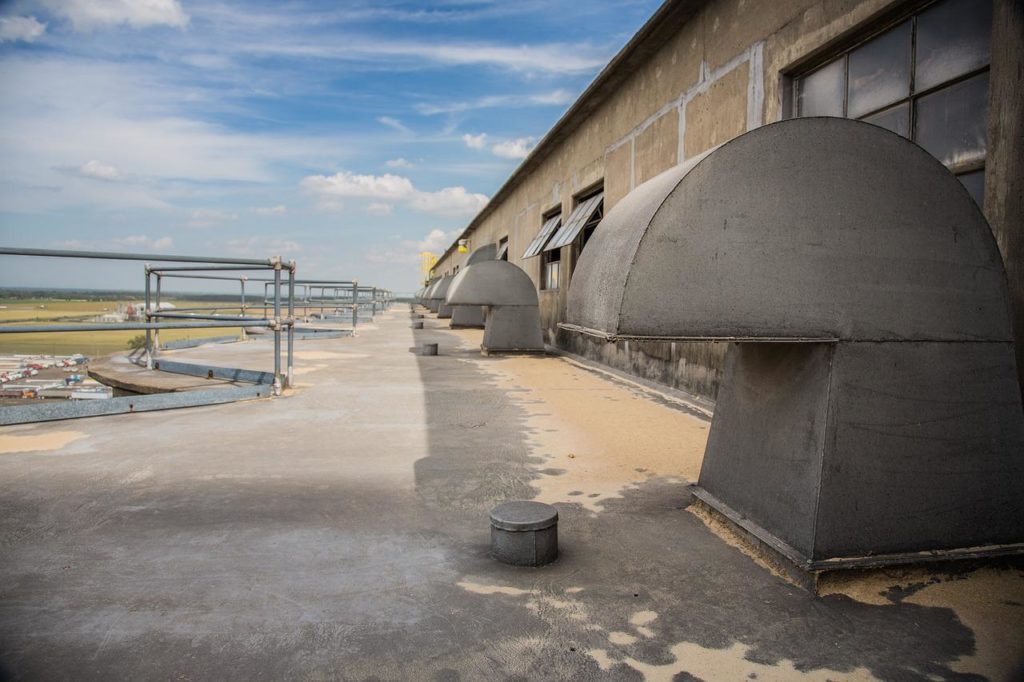Attic ventilation is important to a healthy roofing system, especially in the Northeast. There are many different types of attic ventilation that all accomplish the same task. Proper ventilation ensures that moist air is not trapped beneath your roofing system, which would eventually lead to damage. Attic ventilation works by cycling air in and out of your roofing system. The cycle time is often determined by the type of attic ventilation present in your home. In the end, the movement of air brought on by appropriate ventilation helps ensure proper health of your roofing system.
When left untouched, the stagnant, moist air in your roof will lead to mold growth beneath your roofing system. Not only can this lead to rot within your attic and roof, it can also be very unhealthy for the residents of the home. Similarly, attic ventilation is the key to preventing ice dams, which generally causes leaking and damage when snow melt cannot properly flow off your roof. Attic ventilation helps prevent this because it ensures the entire roof remains the same temperature with the proper ventilation present.
Due to the nature of their construction, roofs are great at keeping water out of our homes. The cost of this, however, is that they are impervious from the inside as well. Without proper ventilation, moisture continues to build up day after day, unable to escape through your roof. As warm air rises in your home, this moisture gains temperature, becoming a breeding ground for mold and rot. Ensuring proper air movement is the key step in ensuring your attic stays dry and cool, allowing you to avoid these dangerous and costly consequences. An added benefit of various types of attic ventilation is that they help keep your attic cooler, which aids in keeping your house cooler as well.
What Are the Different Types of Attic Ventilation?
There are two types of attic ventilation; active and passive. Active attic ventilation systems rely on energy to forcefully move air in and out of the roofing system. On the other hand, passive attic ventilation systems are just that, passive. They require wind or breezes to move air in and out of the vents. One thing to note, while they are referred to as attic vents, these systems impact much more than that. Quality attic ventilation leads to a healthy home starting from the roof and leading downward throughout your home.
Passive Roof Ventilation
The most common types of passive systems are gable vents and ridge vents. These are found on the side of the home, located beneath the roof line and at the very top. Commonly, in a passive system, air enters under the overhang of the roof in the soffit vent. Utilizing wind or the natural movement of warm air, it then rises to escape toward the top of the roofing system. The type of vent can differ from static vents to ridge vents. The type of vent chosen depends primarily on the design of the ventilation system. In the end, the natural movement of warmer air moves upward while pulling colder air in beneath it, creating air flow throughout your roof.
Active Roof Ventilation
Conversely, roofers utilize on active ventilation systems when passive systems do not work. These systems utilize fans or other sources of energy to pull in and remove air. Commonly found types are turbine vents, solar vents, and attic fans, which all work to manually move the moist air outward. When this occurs, cold dry air replaces the moist air.
In both types of attic ventilation, colder dryer air replaces its warm moist counterpart. As long as this happens an adequate number of times per day, the system is successful. As previously stated, a cooler attic will help achieve a cooler home. Active systems and whole house fans facilitate the movement of air, which brings clean air into a home, effectively cooling it.
Benefits of the Types of Attic Ventilation
Homeowners should not overlook the benefits of different types of attic ventilation. A quality roofing contractor ensures a proper ventilation plan is included in all roof replacement quotes and estimates. This is one major indicator of a company you can trust. For your next roof replacement job, don’t be afraid to ask around for what types of attic ventilation your potential contractor offers. This will allow for a proper discussion as to what the best choice is for your home.
Finally, different types of attic ventilation have different aesthetics. Be sure to research what you are looking for before talking with your contractor. This will give them an idea of the style you are looking for and will allow them to bring forth a better replacement plan.
